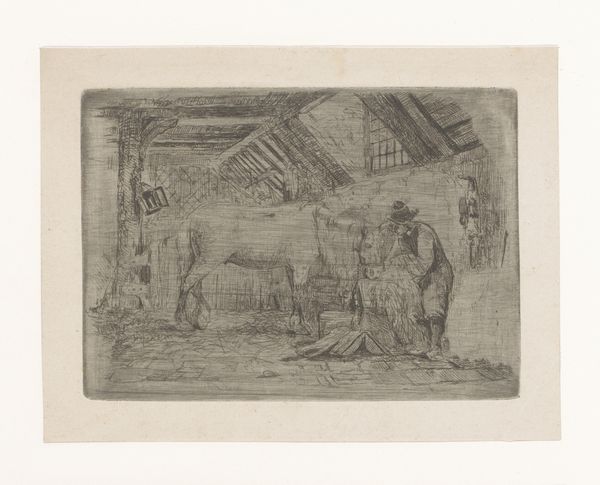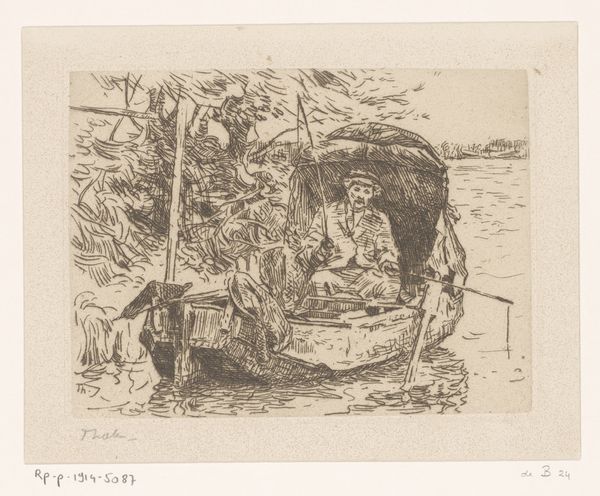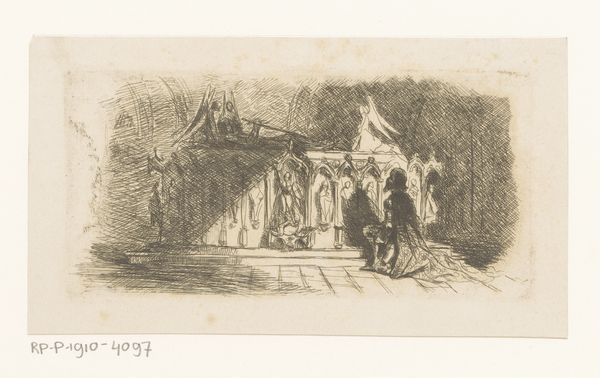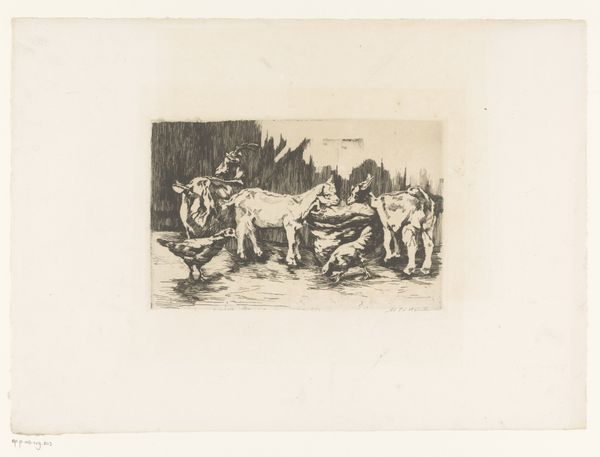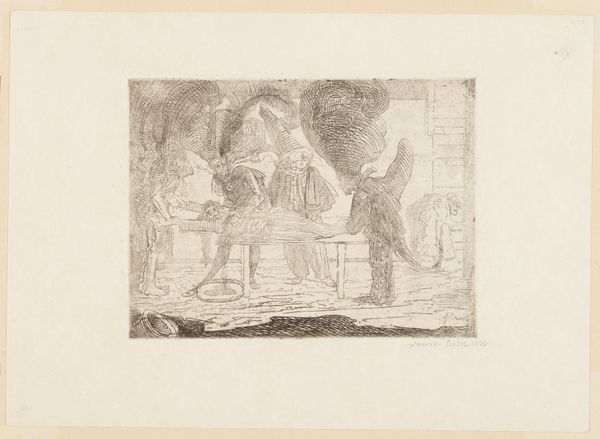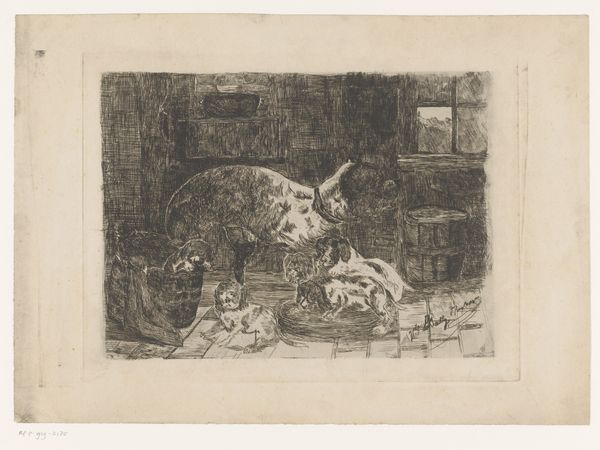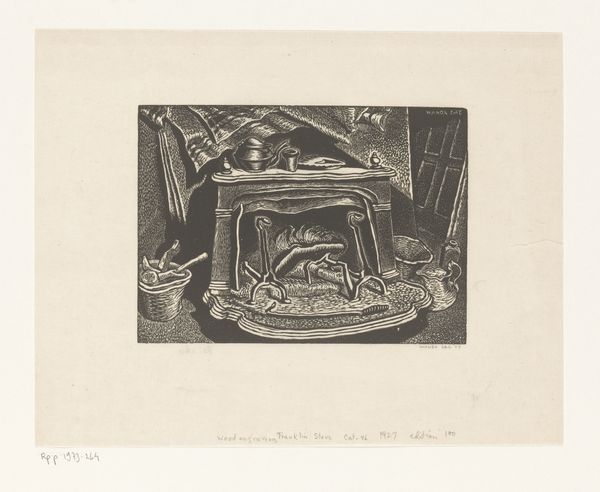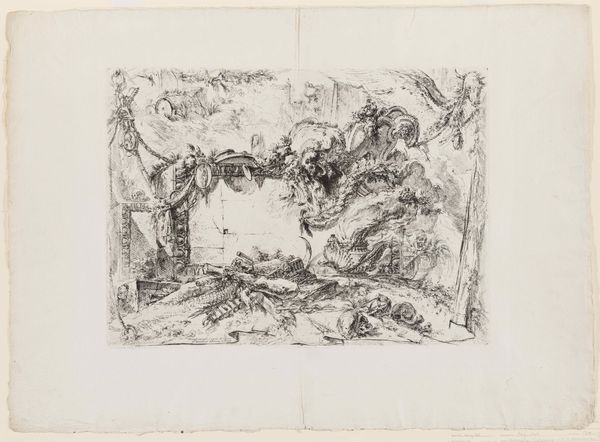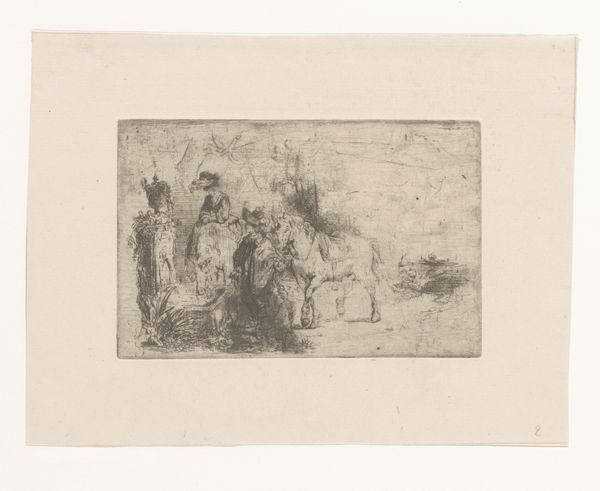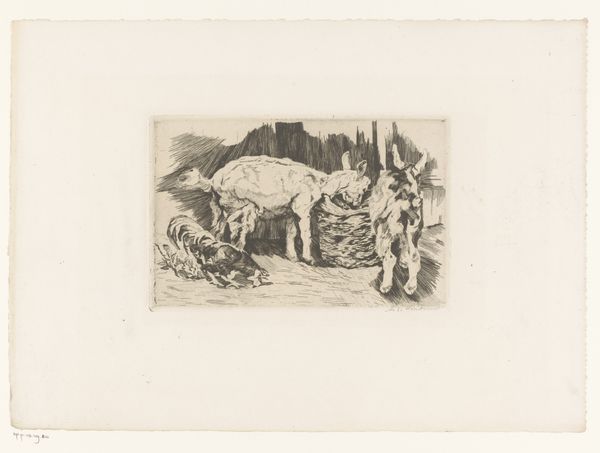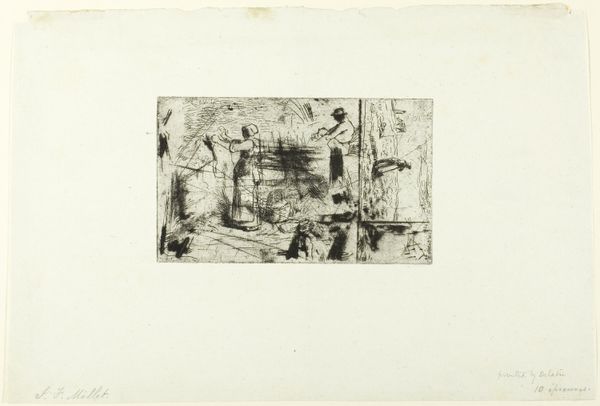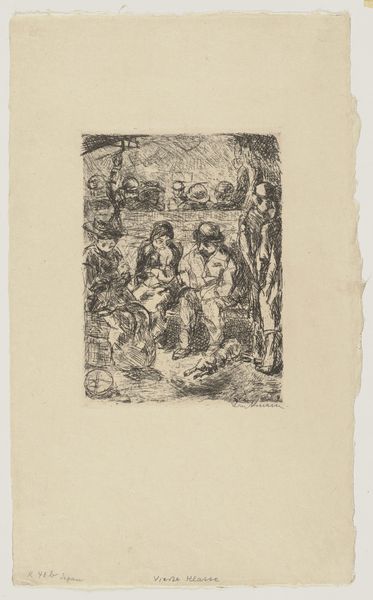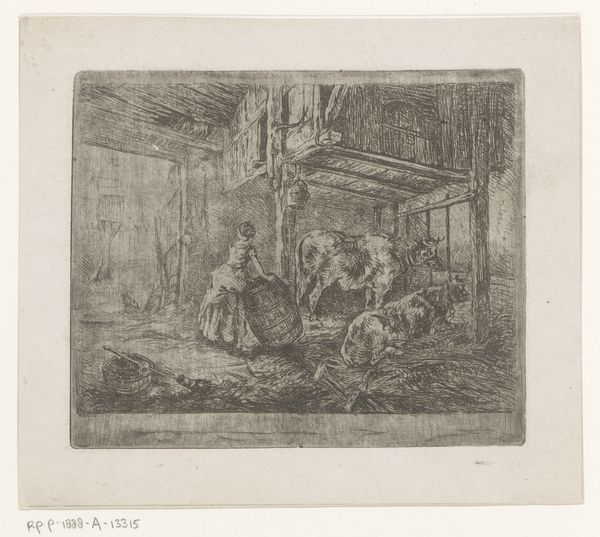
drawing, print, etching, intaglio
#
pencil drawn
#
drawing
#
animal
# print
#
etching
#
intaglio
#
pencil sketch
#
pen-ink sketch
#
horse
#
sketchbook drawing
#
genre-painting
#
realism
Dimensions: height 72 mm, width 97 mm
Copyright: Rijks Museum: Open Domain
Curator: Jan Stobbaerts created this etching, titled "Two Horses in a Stable," sometime between 1848 and 1879. Editor: The way the light falls...it gives everything a hushed, almost secretive feeling. Like we're peeking into a private moment. Curator: Stobbaerts was, of course, deeply influenced by the Realist movement. This work reflects the prevailing trend in genre-painting, emphasizing the lives of common people and the everyday world around them. Editor: Horses often symbolize strength, loyalty, freedom, and even nobility, all rooted in centuries of their shared history with humans, particularly within agriculture. But there’s a softness here that tempers those heroic connotations; they almost seem melancholic, resigned. Curator: Interesting observation. Realist artists like Stobbaerts turned away from Romantic idealism to depict the world as they saw it. The stable wasn't a grand arena, and these aren't idealized steeds, but rather, working animals at rest, reflective perhaps of the human condition. Editor: That’s right—notice how Stobbaerts employs dense hatching and cross-hatching? It gives a real sense of the horses' physicality, the weight of their bodies, the texture of their coats. It is a very intimate representation. Curator: Yes, and etchings, being more accessible and affordable than oil paintings, really helped disseminate such realistic scenes, bringing images of rural life into urban homes and reflecting changing social interests in labor and land. Editor: I agree completely. This small intaglio becomes a mirror reflecting both agrarian labor, and universal conditions such as dependence, trust, or servitude through such subtle imagery. Curator: Ultimately, I think Stobbaerts's print asks us to consider the dignity and intrinsic value in the everyday. Editor: Yes, he reminds us to recognize not only what it once meant to coexist in a rural environment, but also those symbolic vestiges and continuities in a society always undergoing industrial transitions.
Comments
No comments
Be the first to comment and join the conversation on the ultimate creative platform.
